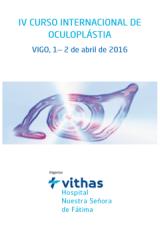Blepharospasm
What is blepharospasm?
We must differentiate several terms that may be confused:
Orbicular myoquimia: a very common condition, that consists of small involuntary contractions or tremors affecting the eyelids due to orbicular contractions. It is not usually visible to others and is only perceived by the patient himself. It can be associated to stress, alcohol or caffeine consumption. It usually recedes spontaneously.
Facial tic: this is an involuntary movement of a group of facial muscles which in many cases cannot be controlled by the patient. It is frequent in children and young people and is usually restricted to one side.
Hemifacial spasm: involuntary movements involving half the face, ranking from very low intensity to very remarkable and incapacitating.
Essential blepharospasm: Involuntary contraction of the orbicular muscle, which is responsable for eyelid closure. Eyelid and frontal muscles may also be involved.
 |
What are the possible causes?
Essential blepharospasm is associated with central nervous system abnormalities, such as basal ganglia degeneration.
Hemifacial spasm can be caused by facial nerve compressions. We therefore must employ neuroimaging tests such as magnetic resonance Imaging to better evaluate its causes.
What are the possible symptoms?
It causes involuntary eyelid closure in a repetitive manner, leaving the patient temporarily without vision. It can sometimos end up causing complete failure to open the eyelids, and therefore be incapacitating.
How is blepharospasm treated?
Myoquimia is a self-limiting condition which does not require treatment, since it recedes over a period of a few days. Botulinic toxin (Botox) may be used in persistent cases. It is not recommended for facial tics.
Hemifacial spasm treated with Botulinum Toxin infiltrated the periocular region.
Essential blepharospasm can be difficult to treat. Most patients can improve with botulinum toxin injections or orbicularis myectomy (removal of the orbicularis muscle, muscle that is responsible for closing the eyelids).
Botulinum toxin treatment must be repeated regularly over time. Puncture sites are previously marked thus evaluated using a protocol know how many places treat and total dose employed. The objective is to paralyze the muscles involved. Depending on the severity of the disease can only treat eyelids or eyebrows to expand treatment and compared.
 |
We generally inject the muscle very superficially and introduce a small amount of diluted botulinum toxin.
The effect usually begins to be noticed by the patient in about two or three days and lasts between 4-6 months.
It is usually a painless treatment, but in some patients who requiere a repeated number of injections pain may appear.
Botulinum toxin is generally safe and has been used for over 15 years.
It should not be used during pregnancy and breastfeeding.
Some patients may suffer temporarily from dry eye caused by reduction of the blink reflex and therefore must use artificial tear drops.
A rare complication is the emergence of blepharoptosis, due to spread of the diluted botulinum toxin into the orbit and subsequent paralysis the upper eyelid elevator muscle.
Myectomy (removal of the orbicularis) is a technique that is currently use don rare occasions, although some patients may still benefit from this aggressive technique.









